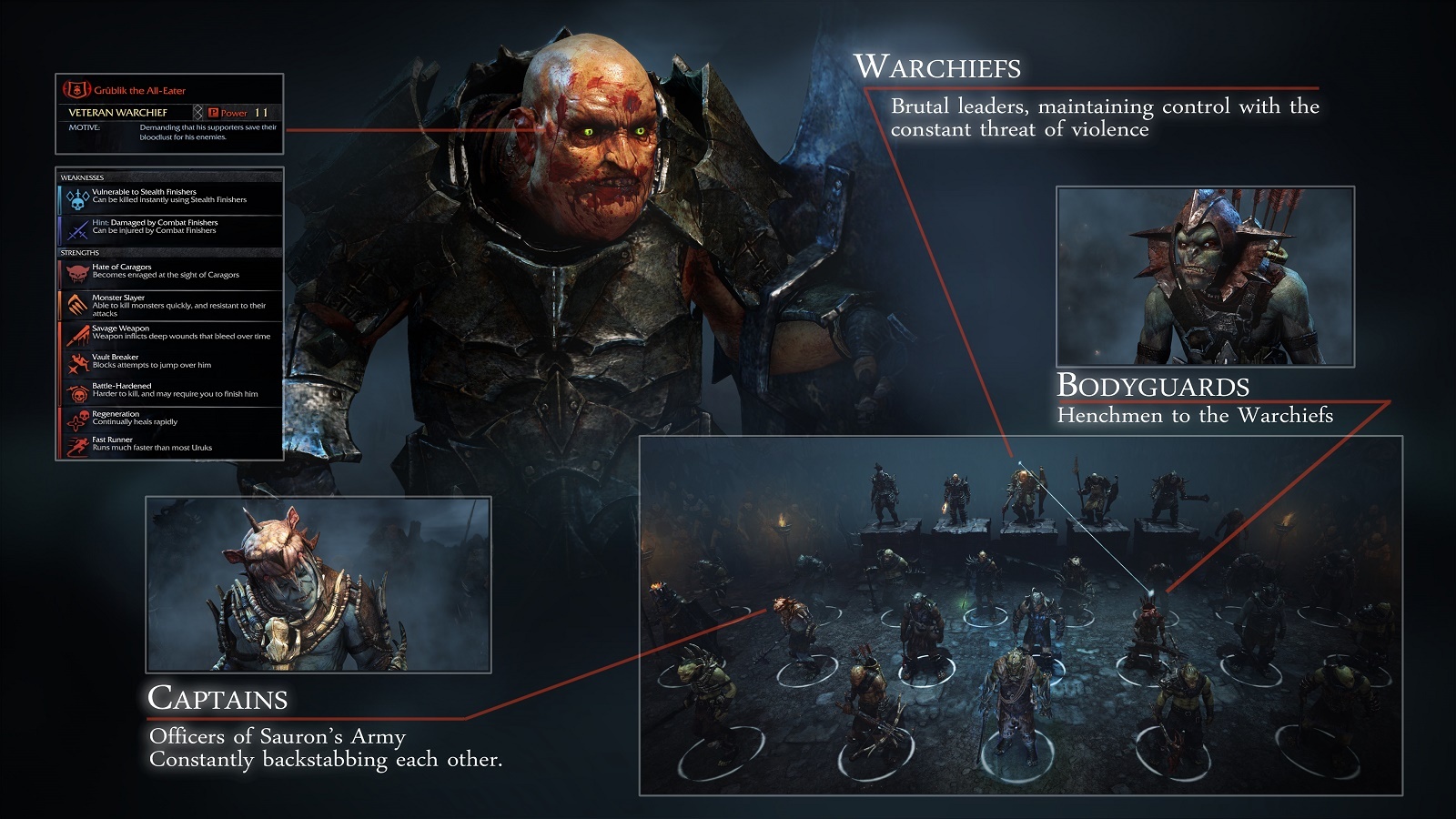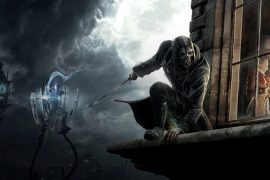Middle-earth: Shadow Of Mordor review
The borrowed bits are solid, the new ideas inspired, and Shadow of Mordor is the best LOTR game of recent memory
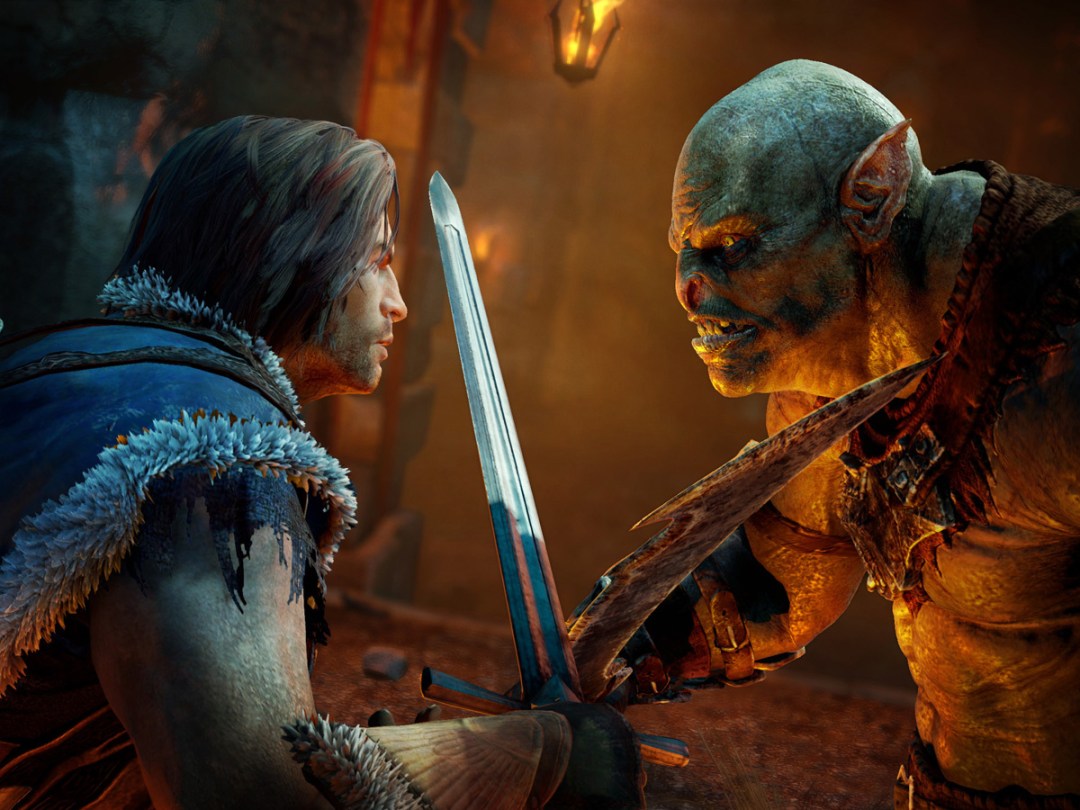
It’s been said that a man seeking vengeance should dig himself two graves, but perhaps that doesn’t apply when said man is already a bit dead?
That’s the situation you find yourself in in Shadow of Mordor, Monolith’s Lord of the Rings orc-assassination simulator that’s clearly heavily ‘borrowed’ from series such as Arkham and Assassin’s Creed. But does it have enough of its own ideas and personality? And does it satisfy the role-playing urges of all the Aragorn-wannabe LOTR fans out there?
READ MORE: Long-term test – Sony PlayStation 4
Lore of the Rings
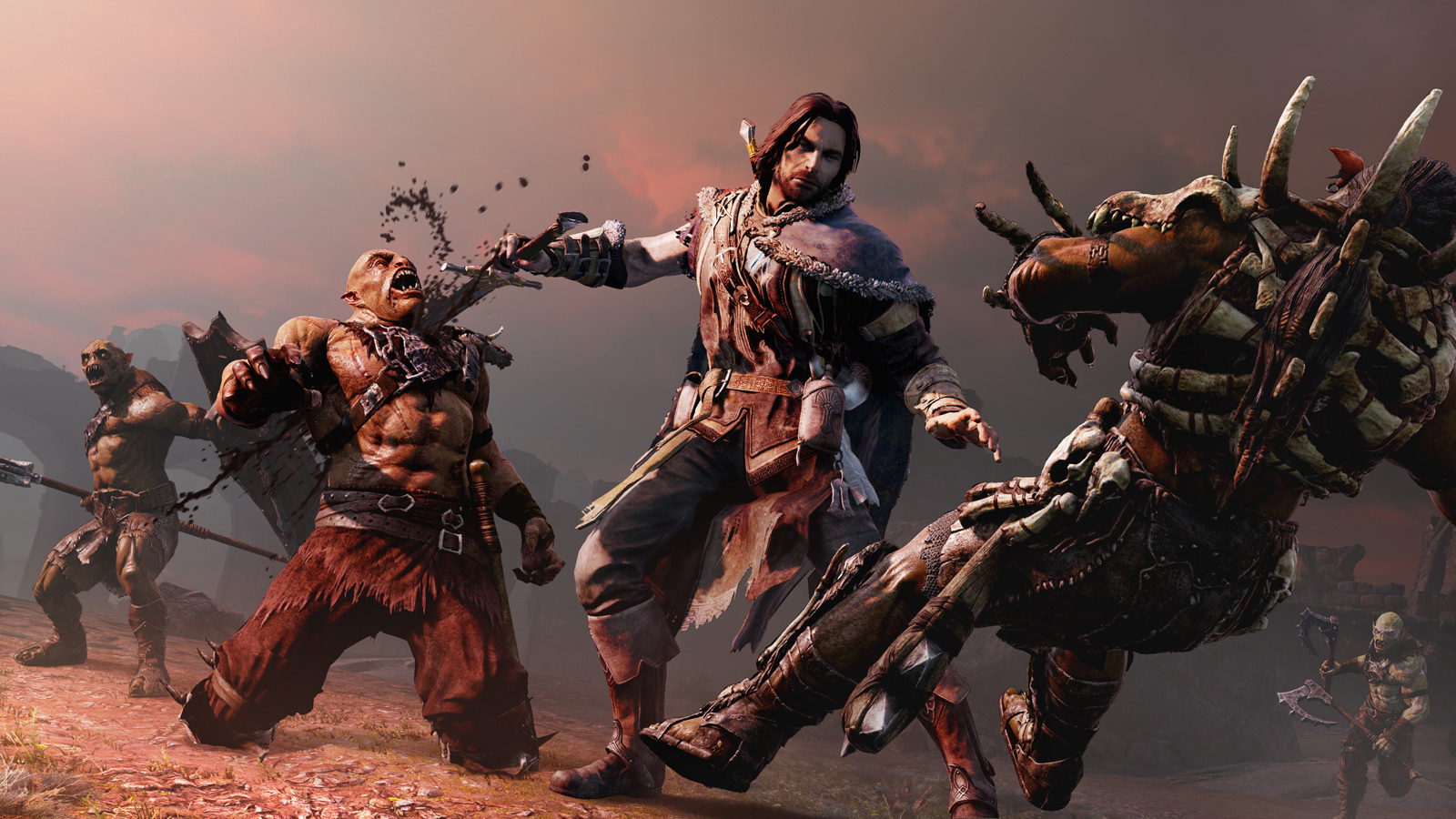
This may be a surprise to today’s whippersnappers, but The Lord of the Rings was sort of a big deal long before Peter Jackson’s films came along, back when people used to read these weird things called “books”. That was mostly down to JRR Tolkien’s perhaps still unparalleled ability to build an astonishingly deep and rich universe, populated with fantasy beings and characters that each have their own unique backstory and purpose. Shadow of Mordor follows that blueprint tirelessly, and works as a bridge between the prequel book The Hobbit and the main Trilogy.
You play Talion, a ranger of Gondor who’s murdered along with his family while guarding The Black Gate, but is then conveniently resurrected by a powerful Elven Wraith and imbued with spectral powers. The catch is that while on his path for vengeance against The Black Hand and his cronies, Talion must make pit stops throughout Mordor to help this Wraith retrieve his shattered memories and uncover his past.
Inauspicious beginnings
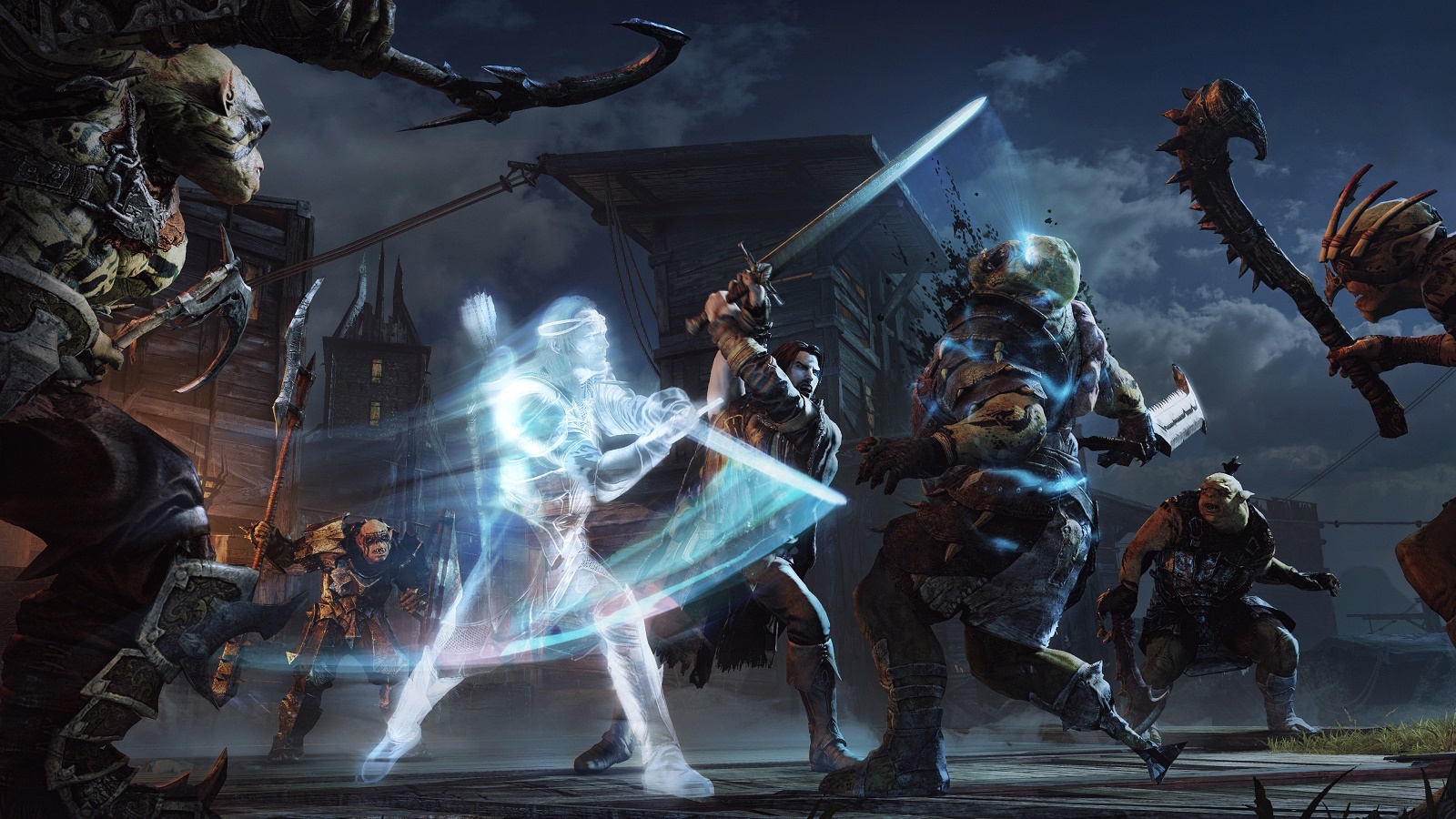
The setup may be intriguing, especially to Tolkienites, but it’s very nearly ruined in the first half an hour by a constant bombardment of text popups as Monolith tries to teach you all of the slightly fiddly controls and complicated mechanics all at once.
Perhaps the idea was that they’d get all the boring instruction things out of the way early, but all it really means is that you get overwhelmed, forgetting the move you just learned to make room for the next button combination foisted upon you, and then you find yourself having to delve into the game menus to remind yourself.
This is precisely the time that the game should be pulling you in with intriguing narrative while unobtrusively teaching you what you need to know. Instead you get an avalanche that could well put a lot of players off.
But stick with it and you will be rewarded.
READ MORE: Kill your productivity – 30 amazing games you can play for free in your browser
Mordor in bloom
This is an open-world journey right from the start, and this version of Mordor is actually a rather pretty one.
The desolate and charred Mordor many will know from Jackson’s films is replaced with a landscape populated with lush greenery and expanses of water. This is a fantastic juxtaposition to common LOTR perception and really helps to establish the infancy of Sauron’s claim on the land. It’s also an ideal showcase for the strong visuals Shadow of Mordor has – it feels right at home on a next generation console, complete with gloriously gory animations to accompany Tarion’s finishing moves.
READ MORE: Opinion – why I don’t want to see an Apple games console
Cloudy, With A Chance of Gollum
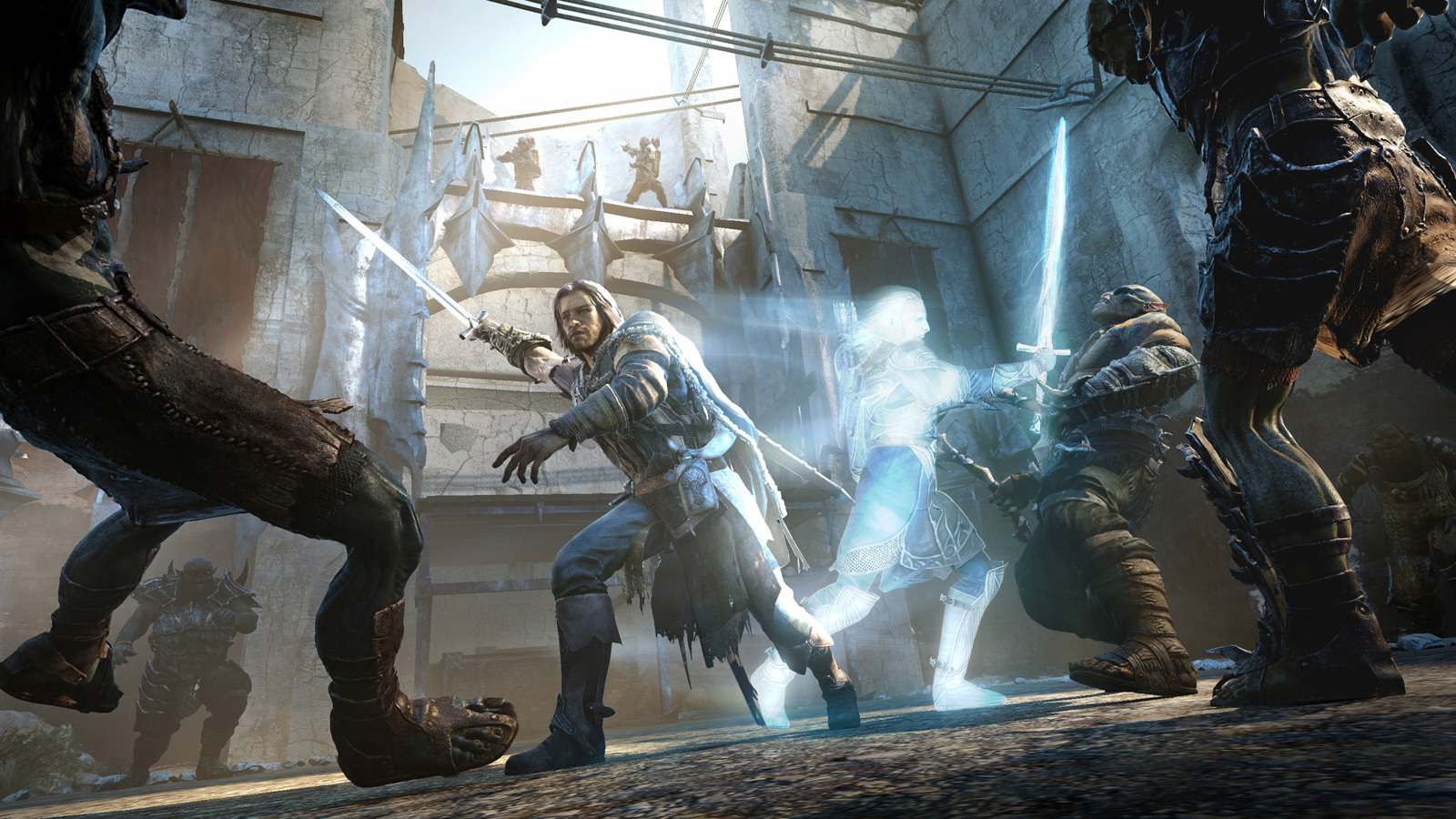
It doesn’t always look so good, though. There are time of day shifts and dynamic weather, and while Mordor looks glorious at sunrise, at night time things feel more oppressive, with blacks and browns overwhelming the colour palette.
Perhaps this was intentional but it makes playing at night far less impressive and enjoyable. Combine the dark with some rain and it even becomes rather hard to see, although the water effects on Talion’s cloak are mesmerizingly good. Not so the hail effect, which looks more like an army of fleas.
READ MORE: Batman Arkham Knight preview
A Tooth for a Tooth

The core and pivotal concept at play here is the Nemesis System. This rather clever system basically means killing or sparing specific enemies affects the entire hierarchy of Sauron’s army.
And if an enemy does get the better of you it can help him gain notoriety and rise through the ranks. Even though the wraith powers mean you’re effectively immortal, this cleverly puts a price on death as rather than losing items or progress you actually just make the game more difficult for yourself – next time you face that enemy he’ll be tougher and accompanied by more allies. He’ll probably even give you some stick for having been such a wimp the last time you met.
And why would you spare an orc? Because instead they can be interrogated for intel on your bigger targets, namely uncovering their location or strengths and weaknesses.
READ MORE: These are the 10 best games in the world right now
Killing In The Name Of
Other missions link directly to the Nemesis System and work to build Mordor as a living ecosystem that’ll continue with or without you. Captains can often challenge one another in versus missions while some will celebrate their promotions with self-indulgent feasts.
Up and coming captains will go out on recruitment missions to beef up their ranks and others go on hunting trips to prove their prowess. These parties can all be crashed by Talion and offer unique chances to alter Sauron’s army and in turn your whole gaming experience.
READ MORE: Far Cry 4 review
Arkham Creed
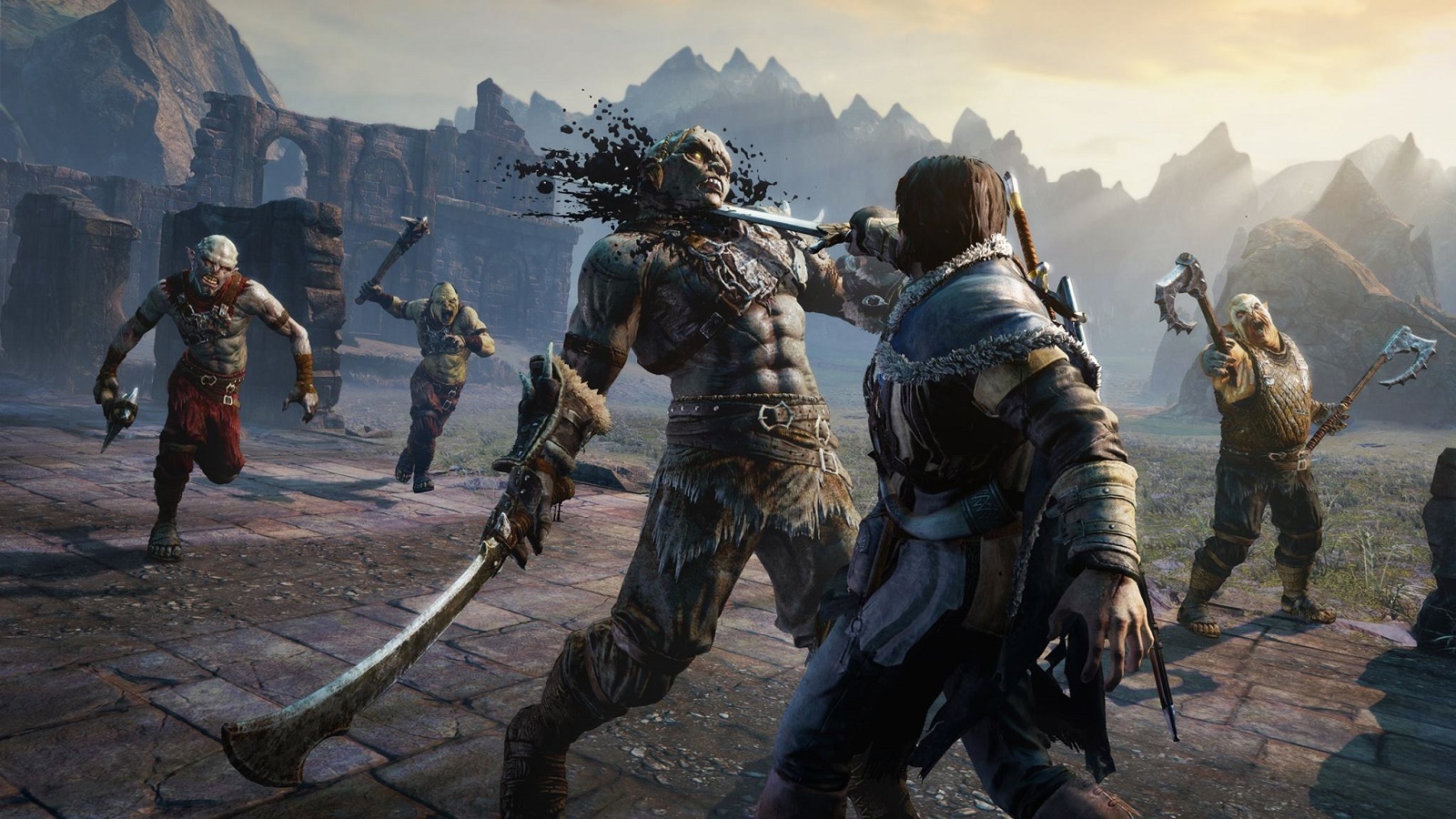
Shadow of Mordor has had many comparisons during it’s short life, namely with the Arkham and Assassin’s Creed franchises. It’s easy to see the logic in these comparisons as, sure enough, Talion flows through combat with Batman-like composure and rhythm, and guts enemies from the shadows without a sound in a very Ezio style.
But Shadow of Mordor has plucked the best bits from each title while formulating its own bespoke manner of gameplay that just works, jumping from stealth gameplay to an all-swords-blazing approach with satisfying ease and appealing to either play style in equal measure.
Skills Forged in Uruk Blood

You can further specialise in one play style over the other with an intuitive skill system that you gradually unlock as you earn XP. These skills include things such as throwing knives, special Wraith takedowns and even the ability to control Mordor’s native canine-things, Caragors.
Alongside the skill set, Talion is also able to use Runes to add special perks to each of his three weapons – his bow, sword and dagger. These Runes are collected from dead Uruk Captains and Warchiefs – the harder the foe the better the Rune you receive. This compliments the ingenuity of the Nemesis System beautifully as you consider cultivating certain Uruks, helping them grow in power so you can earn more boom for your buck when you take them down.
READ MORE: Alien: Isolation review
Verdict

It would have been easy to dismiss Shadow of Mordor as a Lord of the Rings skin on Assassin’s Creed’s body, but it’s actually more than that. Plenty is borrowed here, but despite (or perhaps because of) this the gameplay is really solid, with sneaky stealthing segueing effortlessly into fluid, rhythmic combat.
It’s not without new ideas, either, and we expect the Nemesis System will be ‘borrowed’ by loads of other studios in years to come.
The fact that the whole thing is wedded to a story befitting of the grand, texture-rich Rings universe means that despite the flaws this is still perhaps the best LOTR game ever released. If Monolith can tighten the presentation and find a way to teach the game controls and mechanics without endless text popups it could be onto a genuine classic in the sequel.
READ MORE: The 10 Best Games in the World right now
Stuff Says…
Punishing yet intelligent and well executed, Shadow of Mordor firmly establishes itself as the best LOTR game yet
Good Stuff
True to Tolkien
Nemesis System is ingenious
Gameplay is fluid and fun
Bad Stuff
Graphically underwhelming
Initial bombardment of instructions
